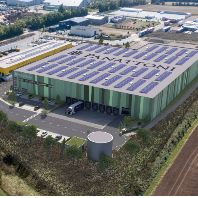With 20-25% retail spending set to be generated online, retailers across Europe need to start future proofing their businesses in order to remain competitive and profitable in the next decade, according to international real estate advisor Savills. The company’s latest report, Megatrends: What lies ahead for the European retail industry? focuses on changing consumer trends and the impact these will have on the retail landscape across the continent.
The report states that nearly 60% of EU internet users now shop online and in 10 years’ time 20-25% of all retail spending is expected to be generated online. The largest share of retail activity however will still take place in physical shops. The store will be as relevant as ever and in the next decade Savills suggests that people of all ages will have become ‘omni-consumers’, combining the online and offline world in their daily lives, and will expect an unconditional offer to switch back and forth between these different worlds.
Eri Mitsostergiou, director of European research at Savills, commented: “It is now imperative for businesses to cater to the principles and lifestyle of both the rapidly growing ageing population and the dynamic young consumer. We have seen how the most successful retailers in Europe have kept in step with these cultural changes, and have merged the digital and physical models of their businesses in an integrated channel.”
As high streets continue to be a magnet for social interaction, consumers will still desire the ‘physical destination’ experience of a shopping trip. Therefore, enhancing the in-store customer experience will be an increasingly essential element in capturing the imagination of the modern consumer.
“Stores will become a ‘walk-in-web-store’, with their purpose not being to ‘sell’ products but to offer solutions, service or an engaging experience,” continued Mitsostergiou.
Savills suggests that with big data and technologies such as near-field communication, geofencing and facial recognition, retailers will soon be able to offer real time micro-personalisation in stores, tailoring the product offer and retailing experience to purchase history, social media or even the consumer’s current mood.
Some retailers have already been offering an exceptionally convenient consumer experience. Lack of time and widespread use of technology on the go have created the demand for convenience in shopping, but retailers creating options to ‘click and collect’ or ‘same day delivery’ have inflated consumers’ expectations, and now not only do they rely on this convenience for grocery shopping but they revert to the same behaviour when making non-essential purchases.
Larry Brennan, director of European retail at Savills, added: “The evolving retail world will create new challenges. Retailers and logistics providers will have to be capable of managing much more complex order and distribution channels. For parts of Europe that are remote, under developed, or where internet usage is in its infancy, this will be particularly difficult.”
The important issue is that the proliferation of omni-channel retailing across Europe is set to have a positive impact on the retail and distribution sector. According to the EC, employment is forecast to grow by 6.2% by 2025, almost double the rate of all other sectors. “This is a pivotal time for the industry,” commented Larry Brennan. “Not all types of retail space in Europe will survive the changes in the sector but businesses must now streamline their marketing strategies in line with tech innovation and changing consumer demand in order to stay profitable and expand over the next 20 years.”
For more information, see the report available for download here.















